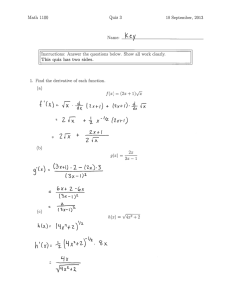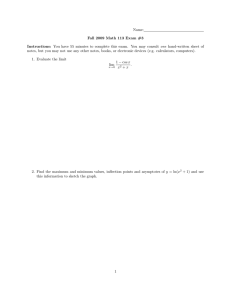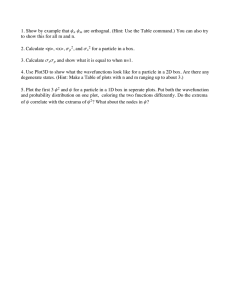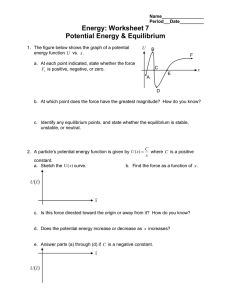Document 12044443
advertisement
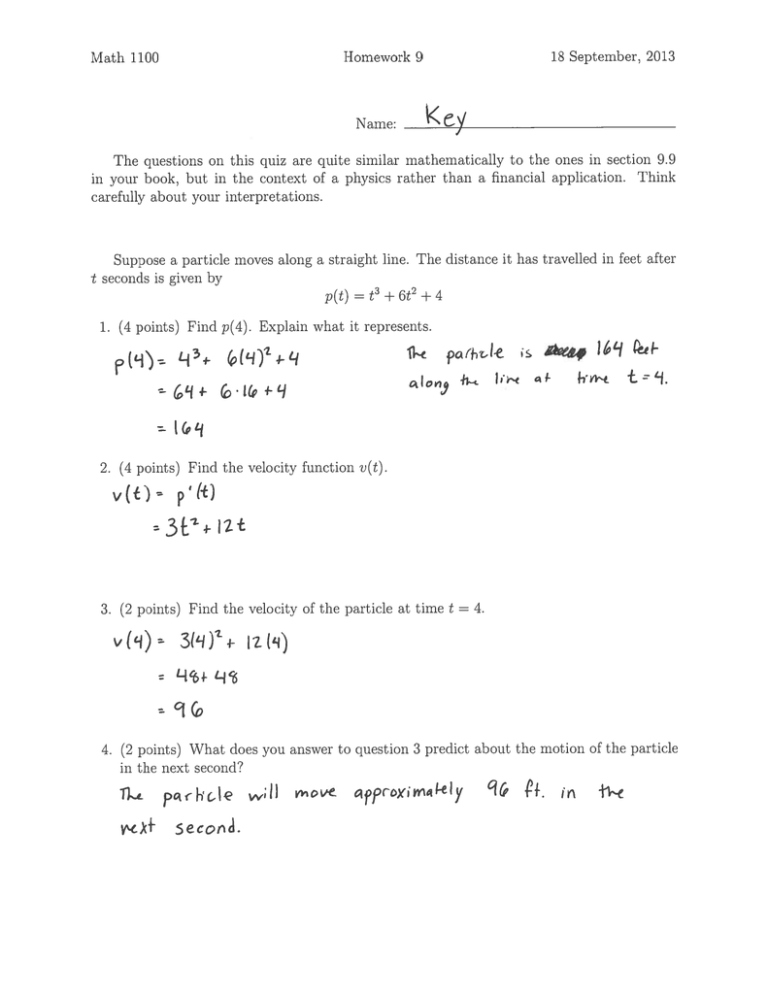
18 September, 2013
Homework 9
Math 1100
Name:
The questions on this quiz are cluite similar mathematically to the ones in section 9.9
in your book, but in the context of a physics rather than a financial application. Think
carefully about your interpretations.
Suppose a particle moves along a straight line. The distance it has travelled in feet after
t seconds is given by
p(t) = + 6t
2+4
1. (4 points) Find p(4). Explain what it represents.
.q
((i..fl’Z
.
4
(
£14I
4i—.
jLj
èd
hv-.
1.c
2. (4 points) Find the velocity function v(t).
v(t) p’(t)
j2.L
3. (2 points) Find the velocity of the particle at time t
3(Lj)tf
=
4.
ui)
4. (2 points) What does you answer to question 3 predict about the motion of the particle
in the next second?
Tkt
v’c.f
pchi w11
5econ.
‘
.
ir
ii
5. (2 points) What does your answer to question 3 predict about the motion of the particle
in the next 4 seconds?
Gi
it
pc4-r&le
r-e
1
v1clS)
LI
6. (4 points) Find p(5)
—
01/er-
5L
0
p(4). Explain what it represents.
1ss)t i)
p( p(Li)
4-,/
0
t-
—
prhle
Dfl1
e.á.
115
7. (4 points) Find p(8)
—
p(4). Explain what it represents.
(YL
pft)- pl’)
—
f
3
{
(Lf)
Li]
73’
-n-i
is
.c.hioi
73 ft
‘€
yl1
a
porcihLc
P—L
8. (4 points) What do your answers to questions 4—7 tell you about using derivatives to
estimate functions?
I*C
pctvif
j,
h-t
d e
Lh h
1
o
dJrc*f
(fl-r
fCUVl’l
S
4-’i
1A
?°‘
fr
-
6ecove




